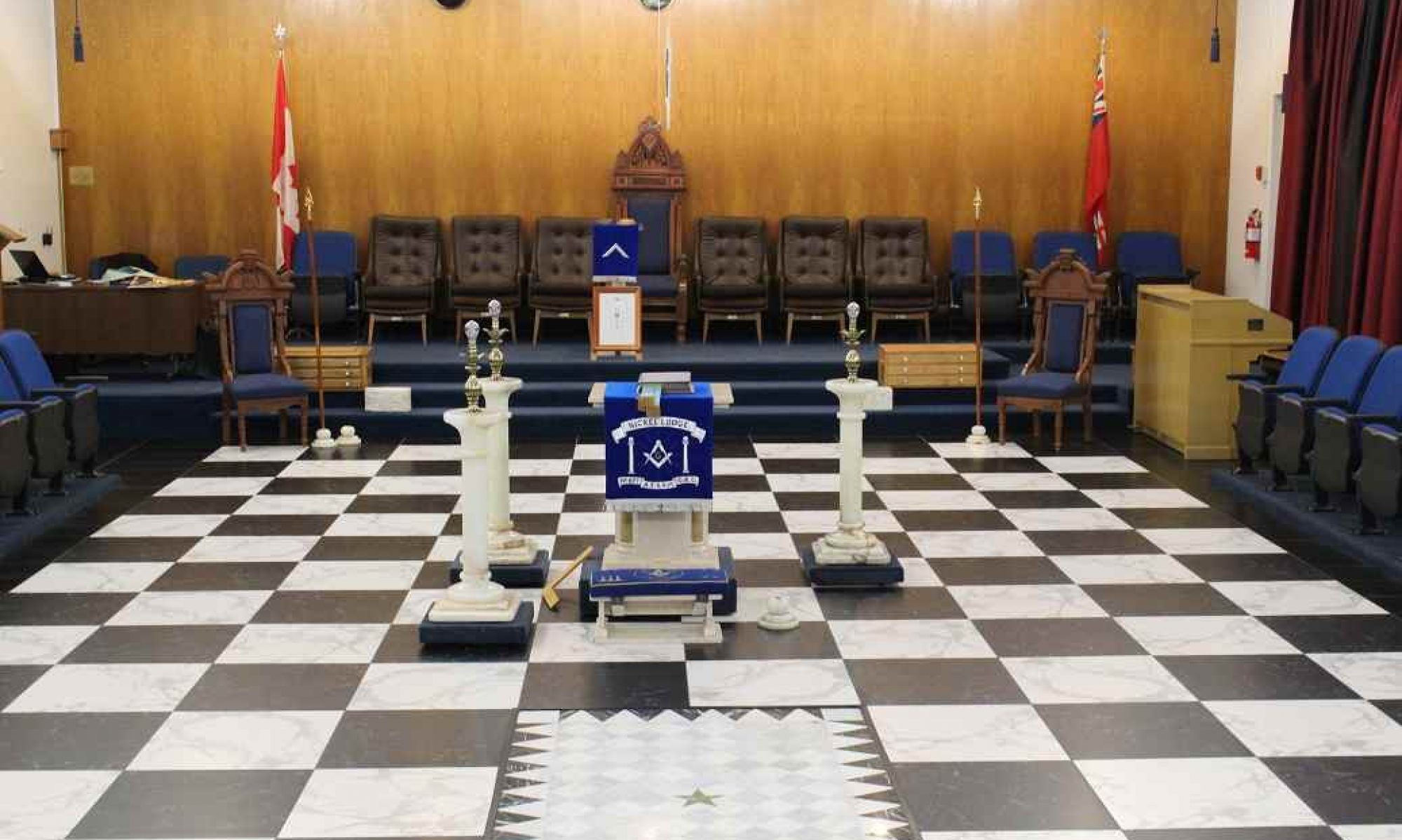From the booklet – “PENETRATING THE VEIL”
– by David C. Bradley–Grand Master–1989-1990
This month’s issue is titled –
“PENETRATING THE VEIL: SPECULATIVE MASONS.”
(As the presentations in this website are available to all readers, items involving the Second and Third Degrees will be excluded.)
SPECULATIVE MASONS
The possibility exists that non-operative masons had been admitted into the trade associations since the early days of the Gothic Period. At that time the employers, in most cases were ecclesiastics. As the eventual owners it would be natural for them to become privy to some of the trade practices and construction methods. The London Masons’ Company is recorded as having an inner fraternity of accepted members, who were not necessarily operative masons. By the end of the seventeenth century there appeared to be bodies of Freemasons spread throughout England.5 As early as 1633, in his Survey of London, the author Stow refers to “the masons, otherwise termed ‘free-masons’.” Dr. Robert Plot, antiquarian, published his Natural History of Staffordshire in 1686 in which he wrote: “To these add the Customs relating to the County, whereof they have one, of admitting Men into the Society of Free-Masons, that in the moorelands of the County seems to be of greater request, than anywhere else, though I find the Custom spread more or less all over the Nation, for here I found persons of the most eminent quality, …”, and also “… they proceed to the admission of them, which chiefly consists in the communication of certain secret signs, whereby they are known to one another all over the Nation …”.6
The seventeenth century provides evidence of landowners and astronomers being admitted into the craft. Although no official records exist from the seventeenth century, there are some secondary references. Meetings were not held on a regular basis, but members assembled when a candidate was initiated. The mot-well-known is the entry of Elias Ashmole, whose diary records his initiation in 1646 at Warrington.7 The members at this meeting were listed as Ashmole and research shows that none were of the operative trade.8 It is interesting to note that one of the listed members was Colonel Mainwaring, who commanded the Parliamentary forces at Macclesfield. Ashmole was a Captain in Lord Ashley’s Regiment. In the same lodge, therefore, a Royalist and a Parliamentarian met as equals in Masonry. The Antiquarian and Deputy Garter King-of-Arms, Randle Holme, mentions that a lodge in Cheshire, of which he claimed membership, had several non-operatives as members.9 Edmund Hall recorded that he was initiated in 1696 at the Swan, Chichester. Other refences indicate loges operating at York and London in the late seventeenth century. Some masonic activity must have been carried on in this period, otherwise the publication of anti-masonic leaflets warning the public of the evil nature of Masonry would not have been necessary.10
The Grand Tour of Europe by educated gentlemen of the early eighteenth century exposed them to new designs in architecture11 and particularly to the spirit of the Renaissance in Italy.12 Possibly this interest in architecture generally and the classical Orders in particular also fostered a desire to join the Craft. Men were beginning to join Masonry not to be operative masons, but to avail themselves of the friendship with other men of similar background. Astronomy, mysticism and other esoteric knowledge might be found within the Craft. After the entry of the non-operative masons into the Craft, the two streams of thought, the preservation of trade secrets and the morality of daily life began to be brought together. This was a slow process, for example, working tools are mentioned in the seventeenth century, but without any moralizing.13 The gradual increase in the number of non-operatives eventually led to the development of a more elaborate ceremony. The mid-eighteenth century witnessed the appearance of the ritual in a form bearing similarities to that of today.
5 The Collected Prestonian Lectures, 1925-1960. P. 47
6 Early Masonic Pamphlets, Knoop, Jones, Hamer. P. 31
7 The Pocket History of Freemasonry, p. 45
8 Idem, p.45
9 Early Masonic Pamphlets, p. 34
10 Idem, p. 24
11 The Genesis of Freemasonry, p. 137
12 The Freemason’s Guide and Compendium, Bernard E. Jones. P. 98
13 The Pocket History of Freemasonry, p. 45
R.W. Bro. Robert South

